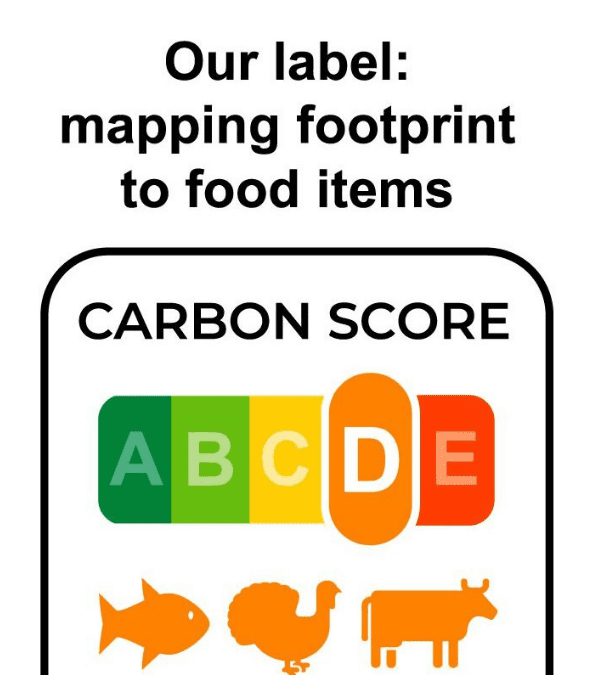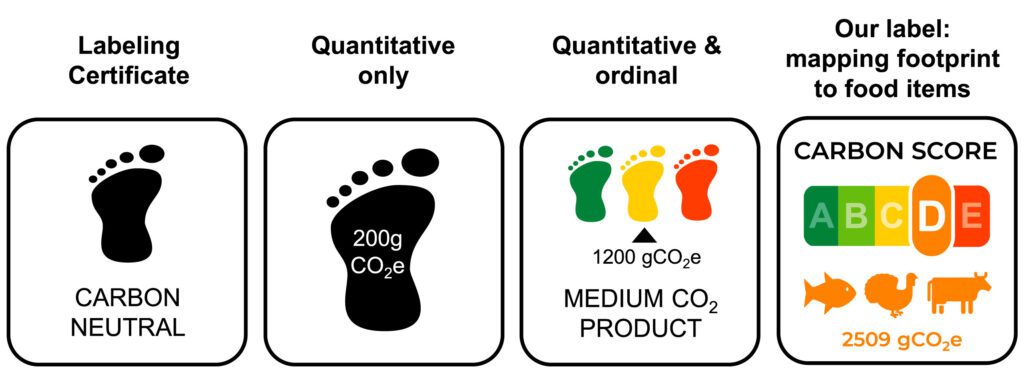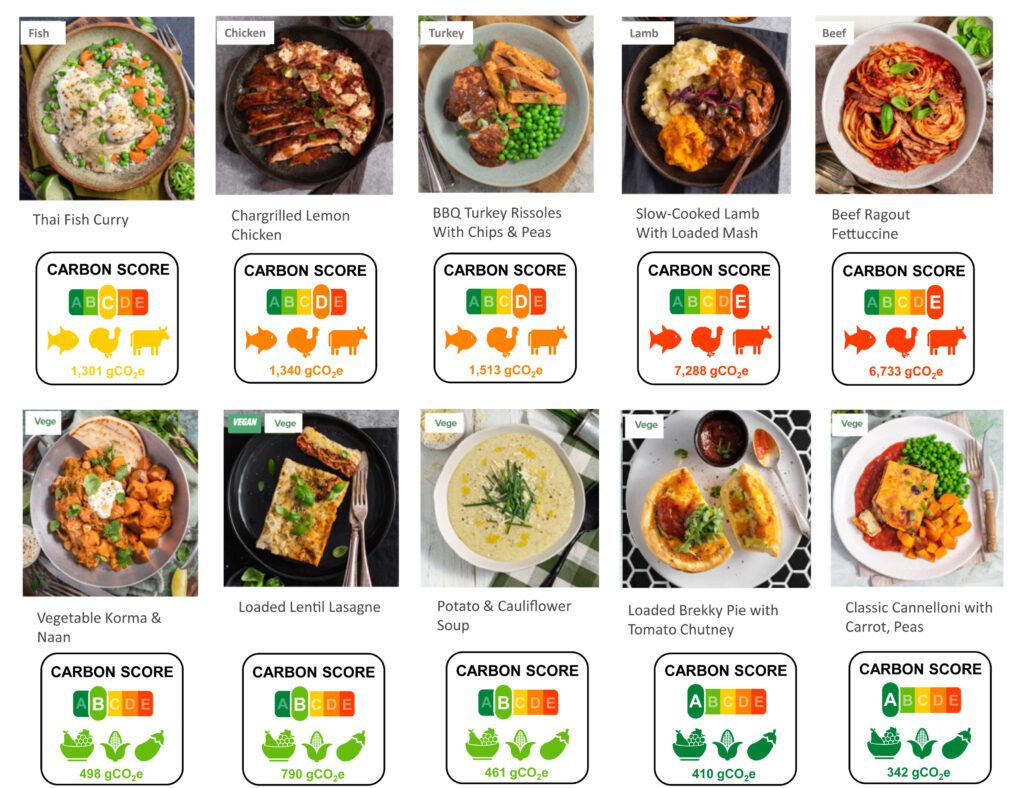
Better food labels may help consumers choose more climate-friendly foods: New study
A new research study published in the journal Appetite has found that carbon food labels can encourage consumers to switch from animal-based to plant-based foods. Globally, there is increasing interest in carbon food labelling, given its potential to nudge consumers towards more sustainable food choices.
Carbon Food Labeling: Closing The Knowledge Gap
Previous research has shown that consumers consistently underestimate the vast difference in greenhouse gas emissions between animal- and plant-based foods. For instance, producing one kilogram of beef emits 60kg of greenhouse gases, whereas producing the same quantity of peas emits just 1kg of greenhouse gases. However, most people think the gap between the two is much smaller.
This matters because collectively, our food choices have a big impact on climate change. Agriculture generates almost a third of global greenhouse gas emissions, with animal products being the biggest contributors. (Li, 2025; Cadario et al., 2025)
Making carbon labels more informative
A “carbon footprint” refers to the greenhouse gas emissions associated with a product. Most carbon labels follow a similar approach. They typically display a number representing greenhouse gas emissions, and a traffic-light system indicating the level of environmental impact from green (low) to red (high). But such labels do not indicate whether the food is animal- or plant-based. Hence, in this case, a high carbon score does not help consumers identify the source of the emissions. (Li, 2025; Cadario et al., 2025) See Figure 1 to view food carbon labels used elsewhere compared to the food carbon label used in the current study (the one on the far right).

Figure 1. The food carbon label maps the carbon footprint to the source of the food, whether plant or animal, along with information about the greenhouse gas emissions. (Cadario et al., 2025)
Cadario and colleagues designed a new type of label. It clearly displays whether the food is sourced mainly from animals or plants, along with the standard emissions score and traffic-light color code. This approach is especially useful for the growing segment of pre-prepared and packaged foods such as soups and other ready-to-eat meals, which often contain a mix of meat and plant-based food.
The new carbon food label used in this study (Cadario et al., 2025) creates a mental link between a food source and its carbon impact. When a consumer sees high carbon scores on food labels and red traffic lights appearing more frequently on meat and other animal products, they begin to make the connection between those products and higher emissions. This is key to addressing a lack of knowledge around food carbon emissions.
These researchers tested their carbon food label against existing labels in a series of experiments with 1,817 everyday consumers from Australia, the United States and the Netherlands. (Li, 2025; Cadario et al., 2025)
One experiment involved soup. Compared with the group exposed to the standard carbon label, the group exposed to the new carbon food label learned to associate animal-based soups with higher greenhouse gas emissions more effectively. The participants were more accurate at estimating the greenhouse gas emissions of a second batch of soups without labels.
This improved knowledge also translates to more climate-friendly food choices. In another experiment with Australian consumers, the researchers encouraged participants to choose five meals from ten options. Five were animal-based and five were plant-based. Half the participants saw the meal options with the carbon labels, and the other half did not see the carbon labels. The group exposed to the carbon labels chose fewer animal-based options in their weekly meal plan. See Figure 2 below for the different carbon labels that were presented to participants.

Figure 2. Providing information about the source of the food, whether plant or animal, influenced choices of meal plans. (Cadario et al., 2025)
In the final experiment conducted in the Netherlands, displaying the carbon label made university students more likely to choose the plant-based snack option rather than the animal-based option. (Li, 2025; Cadario et al., 2025)
What these results mean for consumers and businesses
A simple change to food labels may help consumers make more informed environmental choices. For businesses and policymakers, it shows displaying only carbon numbers isn’t enough – the food source is crucial.
Some forward-thinking restaurants and food companies are already experimenting with adding carbon labels to the menu to encourage diners to choose climate-friendly dishes. These study results suggest such an approach could be more effective when combined with these new carbon labels. (Li, 2025; Cadario et al., 2025)
References:
Cadario R, Li Y, Klesse A-K. Bridging the knowledge gap: Mapping carbon emissions to food items facilitates choices of plant-based over animal-based Items. Appetite. 2025;107910.
Li Y. Want a side of CO2 with that? Better food labels help us choose more climate-friendly foods. The Conversation. February 25, 2025. Available at: https://theconversation.com/want-a-side-of-co-with-that-better-food-labels-help-us-choose-more-climate-friendly-foods-250513
